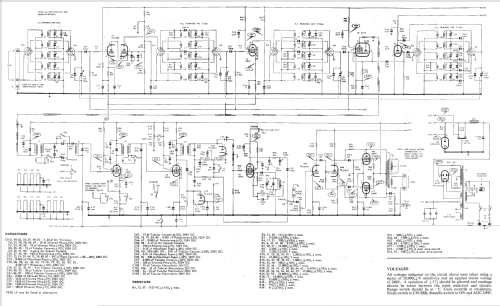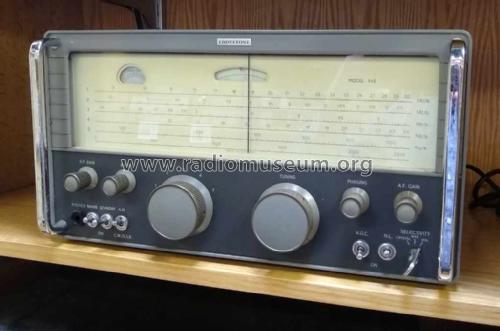- Land
- Grossbritannien (UK)
- Hersteller / Marke
- Eddystone (Brand), Stratton and Co., Ltd., Eddystone Radio Ltd.; Birmingham
- Jahr
- 1962–1970
- Kategorie
- Kommerzieller Empfänger (auch Amateurbänder)
- Radiomuseum.org ID
- 109326
Klicken Sie auf den Schaltplanausschnitt, um diesen kostenlos als Dokument anzufordern.
- Anzahl Röhren
- 12
- Hauptprinzip
- Super mit HF-Vorstufe; ZF/IF 450 kHz
- Wellenbereiche
- Wellen in den Bemerkungen.
- Betriebsart / Volt
- Wechselstromspeisung / 110-125; 200-250; Volt
- Lautsprecher
- - Für Kopfhörer oder NF-Verstärker
- Material
- Metallausführung
- von Radiomuseum.org
- Modell: 940 - Eddystone Brand, Stratton and
- Form
- Tischgerät-gross, - Querformat (breiter als hoch oder quadratisch).
- Abmessungen (BHT)
- 425 x 222 x 381 mm / 16.7 x 8.7 x 15 inch
- Bemerkung
- General coverage receiver, 480-1030 kHz / 1,03-2,4 / 2,4-5,4 / 5,4-12,7 / 12,7-30 MHz; AM, SSB (BFO);
S-meter, crystal filter.
- Nettogewicht
- 19.5 kg / 42 lb 15.2 oz (42.952 lb)
- Originalpreis
- 153.00 GBP
- Datenherkunft
- -- Original-techn. papers.
- Autor
- Modellseite von einem Mitglied aus A angelegt. Siehe bei "Änderungsvorschlag" für weitere Mitarbeit.
- Weitere Modelle
-
Hier finden Sie 256 Modelle, davon 127 mit Bildern und 46 mit Schaltbildern.
Alle gelisteten Radios usw. von Eddystone (Brand), Stratton and Co., Ltd., Eddystone Radio Ltd.; Birmingham
Forumsbeiträge zum Modell: Eddystone Brand,: 940
Threads: 2 | Posts: 2
After using the set for some time, I noticed spurs at several points on the highest frequency range. Some investigation with a hand-held scanner revealed that the ECC189 was oscillating quite strongly at about 60 MHz. Further checks revealed that the problem was also present on the 2.4 - 5.4 MHz range, but I hadn't noticed because aerial noise drowned out the offending spurious responses. They were audible when the aerial was replaced with a 47-Ohm resistor. The spurs on the highest frequency range are also very quickly "tuned through" and may not be noticed.
The ECC189 has a grid stopper, and the grid of the second half of the cascode combination is directly grounded via a number of almost inaccesible capacitors. I am not convinced that these have deteriorated, and suspect that the problem may be caused by my using a different make of ECC189 from that originally in the set. Its also possible that many 940s had this problem from new. None of my ECC189s are Brimar or Mullard.
The problem was solved by using 47 Ohm anode stoppers wired to the wavechange switch as in the attached photo. The performance of the set hasn't changed with these additions. Using a single resistor was considered, and rejected because of the difficulty of accesing the valve base.
Comments invited - Bryce
Anlagen
- Eddystone 940 RF Anode Stoppers (45 KB)
Bryce Ringwood, 14.Jun.09
The following may be of interest:
An article in Short Wave Magazine (Aug to October 1988) issues gave instructions for "restoring" (in fact modifying) the Eddystone 940. When purchasing a 940, be aware that it may have been modified and that these changes may not be what you want. The changes to the i.f transformers may be difficult to reverse.
Bryce Ringwood, 13.Jun.08


